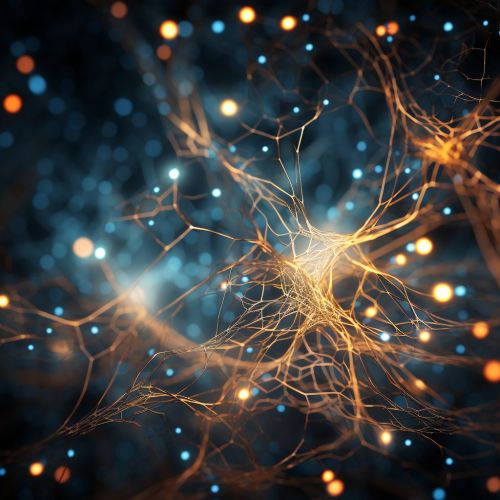Neural Circuits
Introduction
Neural circuits, also known as neural pathways, are a series of interconnected neurons that are responsible for the transmission of information throughout the nervous system. These circuits form the basic building blocks of the nervous system and play a crucial role in the functioning of the brain and the body.
Structure of Neural Circuits
Neural circuits are composed of neurons, which are the basic functional units of the nervous system. Each neuron consists of a cell body, dendrites, and an axon. The neurons are interconnected through synapses, which are junctions where the axon of one neuron communicates with the dendrite of another neuron. The flow of information in these circuits is typically unidirectional, from the dendrites, through the cell body, and out through the axon.


Types of Neural Circuits
There are several types of neural circuits, each with a specific function and structure. These include:
- Feedforward circuits: These circuits transmit information in one direction, from the input to the output. They are involved in many basic sensory and motor processes.
- Feedback circuits: These circuits involve a loop where the output of a circuit is fed back into the input. This allows for the modulation of the circuit's activity and is crucial for many cognitive functions such as attention and memory.
- Recurrent circuits: These circuits involve a loop where the output of a neuron is fed back into its own input. This can generate sustained activity and is important for functions such as working memory.
- Parallel circuits: These circuits involve multiple pathways running in parallel. This allows for the simultaneous processing of information and is crucial for many complex brain functions.
Functions of Neural Circuits
Neural circuits are involved in all aspects of nervous system function. They are responsible for the transmission of sensory information from the periphery to the brain, the processing of this information within the brain, and the generation of motor commands that are sent from the brain to the muscles.
In addition, neural circuits are involved in higher cognitive functions such as learning, memory, attention, and emotion. They are also implicated in many neurological and psychiatric disorders, including Alzheimer's disease, Parkinson's disease, schizophrenia, and depression.
Neural Circuit Dynamics
The activity of neural circuits is not static but changes dynamically over time. This is due to the plasticity of synapses, which can strengthen or weaken over time in response to activity. This synaptic plasticity is thought to be the basis of learning and memory.
In addition, the activity of neural circuits can be modulated by various factors, including neurotransmitters, hormones, and external stimuli. This allows the nervous system to adapt to changes in the environment and to modulate its activity in response to different situations.
Neural Circuit Models
Several models have been proposed to understand the functioning of neural circuits. These include the perceptron model, the Hopfield network, and the neural network model. These models use mathematical equations to describe the behavior of neural circuits and have been used to develop algorithms for machine learning and artificial intelligence.
Conclusion
Neural circuits are a fundamental component of the nervous system and are involved in all aspects of brain function. Understanding the structure and function of these circuits is crucial for understanding the brain and for developing treatments for neurological and psychiatric disorders.
